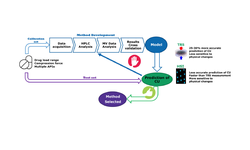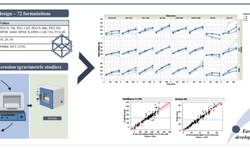Scientific papers
The objective of this study was to enhance the comprehension of the drug-release mechanism from sustained release matrices utilizing two recently developed polyurethanes. A novel in silico formulation tool based on 3-dimensional cellular automata was employed for simulation. Binary matrix tablets were prepared with two polymers and theophylline as the model drug. In silico simulations were conducted for each formulation, and the release behavior was compared with experimental drug release profiles. Additionally, scanning electron microscopy (SEM) was employed to image the polymer distributions in the tablets. The impact of tortuosity on these distributions was quantified and validated using experimental data. Results revealed that the polymers demonstrated a remarkably effective ability to control drug release even at low excipient concentrations (10% w/w of excipient controlled drug release for almost 8 hours). The mesoscopic in silico model provided insights into how the novel biopolymers governed drug release. The mechanism involved a unique geometrical arrangement of excipient particles, forming an almost continuous barrier around the drug, comparable to lipid or waxy excipients but with the added benefits of higher compactability, stability, and absence of excipient polymorphism.
Comments
No comments posted yet.
Add a comment















